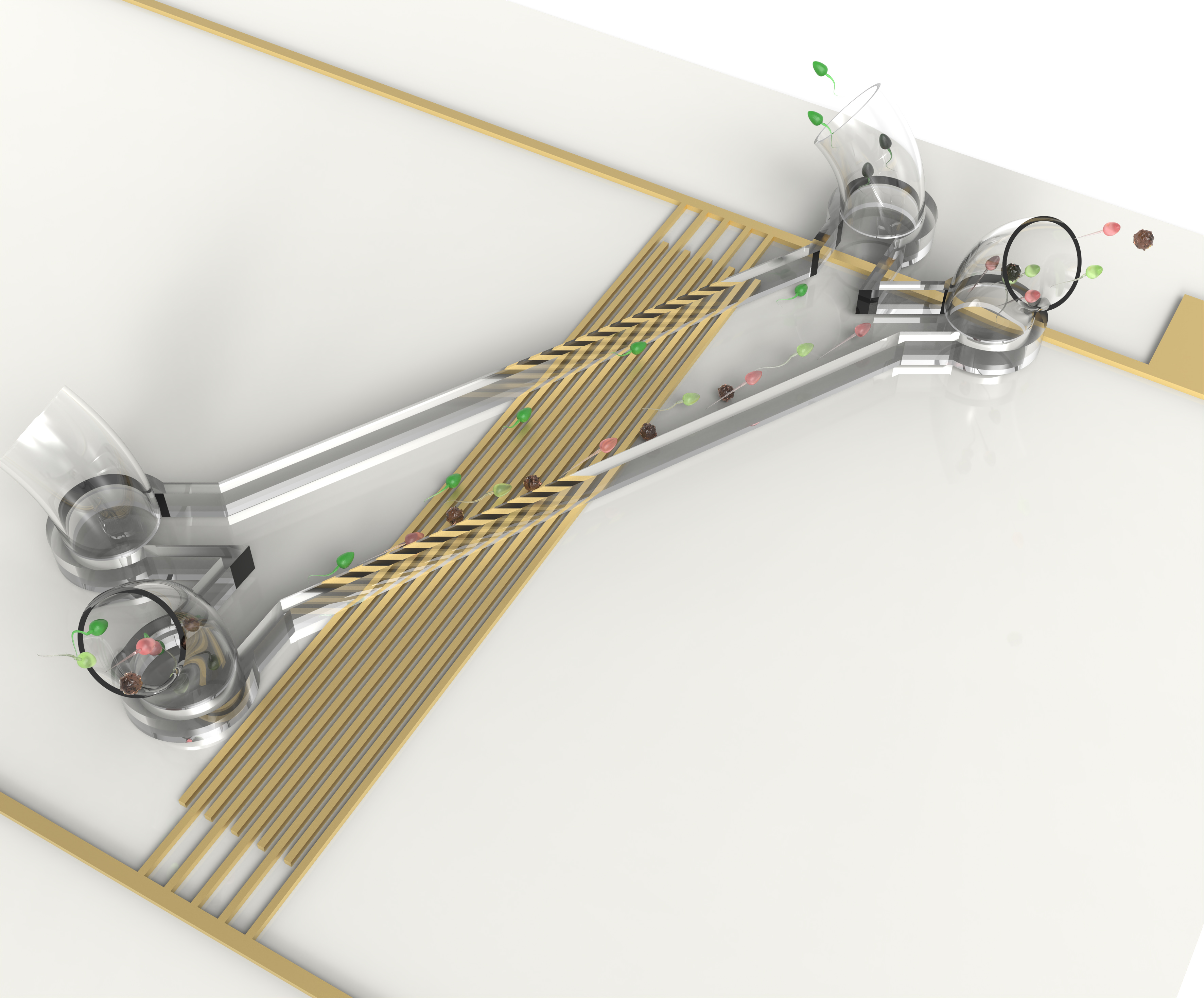Media release
From:
Monash University researchers have combined acoustic waves and fluid dynamics to create a new approach for separating high-quality sperm in assisted reproduction – opening new windows for infertile couples to have a family of their own.
This rapid and automated acoustofluidic process, developed by a team from Monash University’s Department of Mechanical and Aerospace Engineering, can isolate sperm with normal head morphology and high DNA integrity from raw semen samples.
The device can process roughly 140 sperm per second and select more than 60,000 high-quality sperm in under 50 minutes – a clinically-relevant number of sperm to perform IVF (In Vitro Fertilisation) and ICSI (Intracytoplasmic Sperm Injection).
This life-changing research, published in the leading microfluidic journal Lab on a Chip, was led by second-year PhD student Ms Junyang Gai. The work has been supervised by Dr Reza Nosrati and Professor Adrian Neild – experts in microfluidics from the Department of Mechanical and Aerospace Engineering.
“The approach isolates sperm from raw semen by applying an acoustic field at a 30° angle to the flow direction. The acoustic forces direct and push high-quality sperm out of the mainstream, across the microchannel and isolates them in a separate outlet, leaving the general population of sperm in the raw sample,” Ms Gai said.
With the application of SSAW (standing surface acoustic waves) at 19.28 MHz and 1-2W, the acoustic radiation force was large enough to overcome the drag and guide the motile sperm to swim across the microchannel width, while other sperm and debris followed the mainstream flow to be collected from the discarded outlet.
This enabled a continuous, high-throughput, and size-dependent selection process for isolating high-quality sperm.
“Our results demonstrate that the selected sperm population exhibit a considerably higher percentage of progressively motile sperm (83 per cent), than both the initial raw sample (52 per cent) and the discarded subpopulation of sperm (36 per cent),” Ms Gai said.
The result is the selection of sperm with over 60 per cent improvement in progressive motility (the ability for sperm to move independently), while providing a clinically-relevant sample for IVF and ICSI. Sperm selected from this approach also show a near 40 per cent improvement in DNA integrity.
Dr Nosrati says the success rate depends on many different parameters, but ultimately, it is down to the quality of sperm and egg.
“Our process aims to select better sperm within a faster time frame, so hopefully this can lead to improved outcomes in assisted reproduction. When fully tested and implemented, this method could open new windows and opportunities for infertile couples to have a baby,” Dr Nosrati said.
“We hope that with further testing, our acoustofluidic sperm selection process can provide new opportunities and be of benefit to the assisted reproduction industry, and help remove the fear, anxiety and negative stereotypes associated with infertility.”
The infertility rate has increased over the past 50 years, with one in six couples experiencing infertility. Male infertility is responsible for about 30 per cent of cases, with a combination of male and female factors contributing to about half of cases, worldwide.
“Male infertility is a global reproductive issue and several clinical approaches have been developed to tackle it. However, their effectiveness is limited by the labour-intensive and time-consuming sperm selection procedures used,” Dr Nosrati said.
“Sperm preparation or selection is a key step in assisted reproduction being performed right before fertilising the egg. The current clinical process involves multiple washing and centrifugation steps and a manual selection step, and takes up to three hours to complete, which can also be harmful to sperm.”
Professor Neild says the method of sperm selection hasn’t changed much over the past 30 years, selecting sperm mainly based on motility, and as a result, the success rate of assisted reproduction cycles has plateaued at about 33 per cent.
“Our approach also considers sperm size and morphology during the selection process, in addition to sperm motility. With further research, hopefully our approach can improve the outcomes of assisted reproduction and reduce the costs associated with the treatment cycle,” Professor Neild said.
Professor Neild is a world expert in acoustofluidics with many important contributions to the field over the past 15 years. Dr Nosrati is a pioneer in microfluidics for assisted reproduction and has developed technologies for sperm selection and analysis over the past six years.
To download a copy of the research paper titled ‘High DNA integrity sperm selection using surface acoustic waves’, please visit https://pubs.rsc.org/en/content/articlelanding/2020/lc/d0lc00457j#!divAbstract.
Multimedia





 Australia; VIC
Australia; VIC


